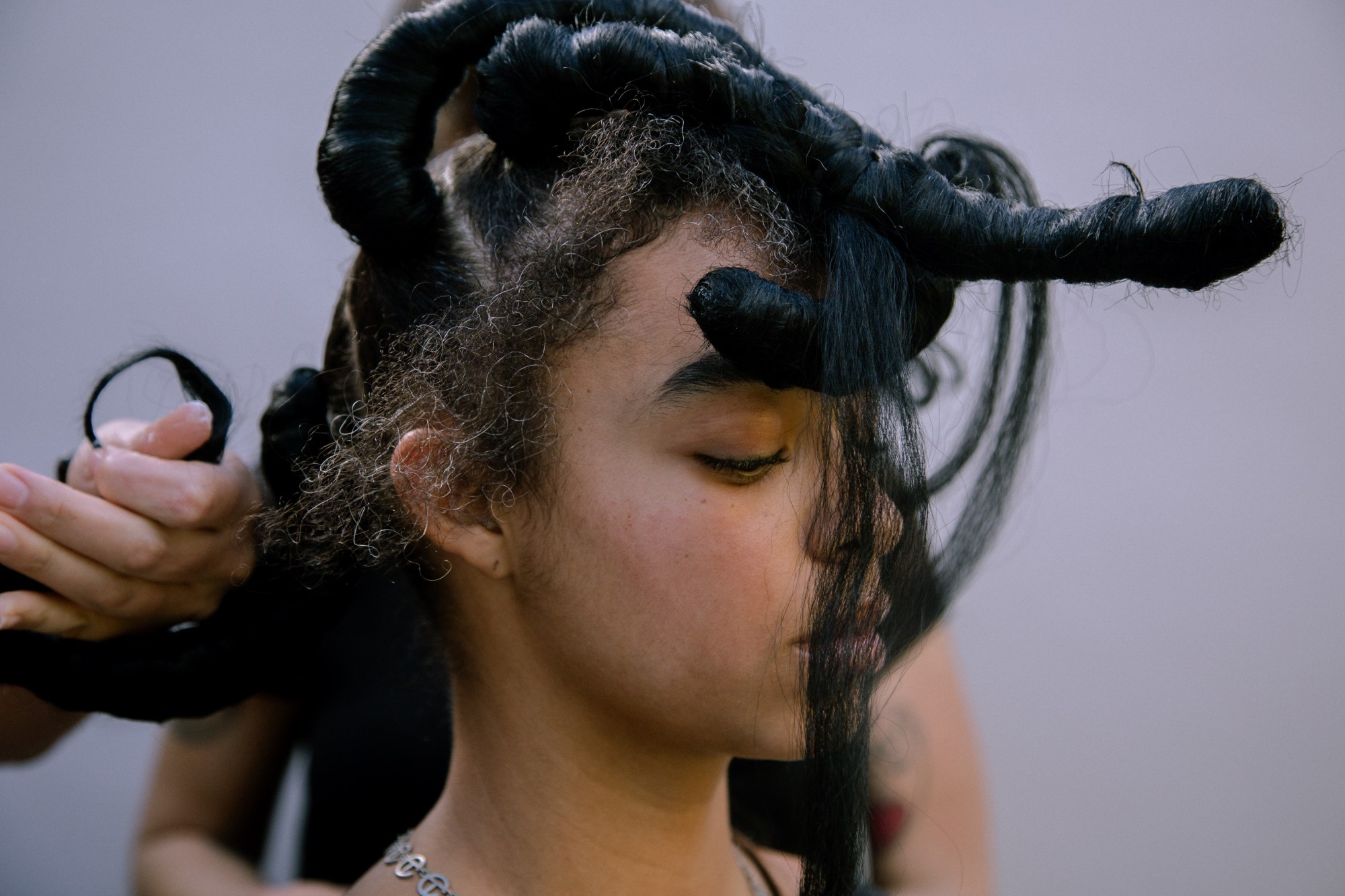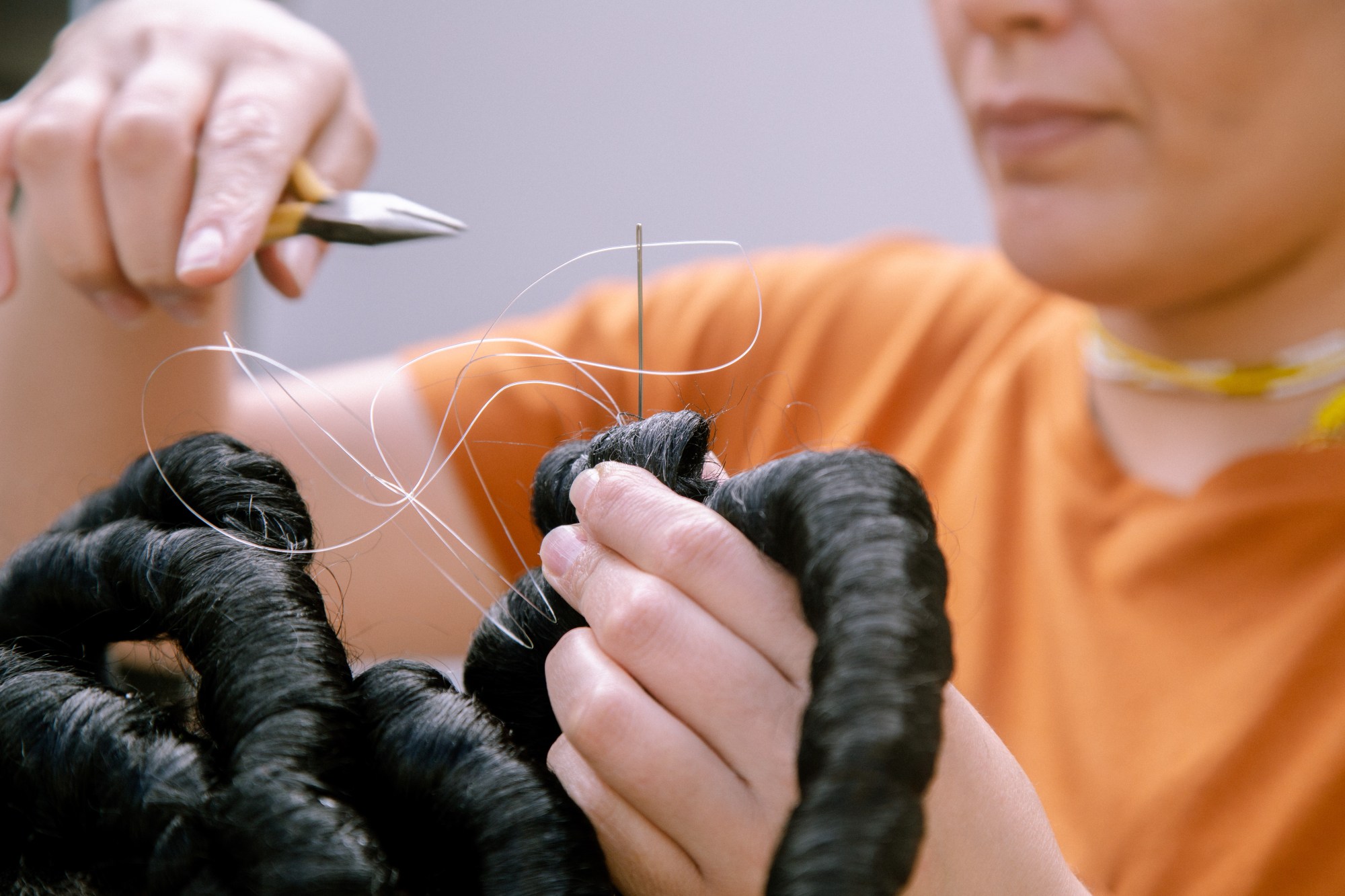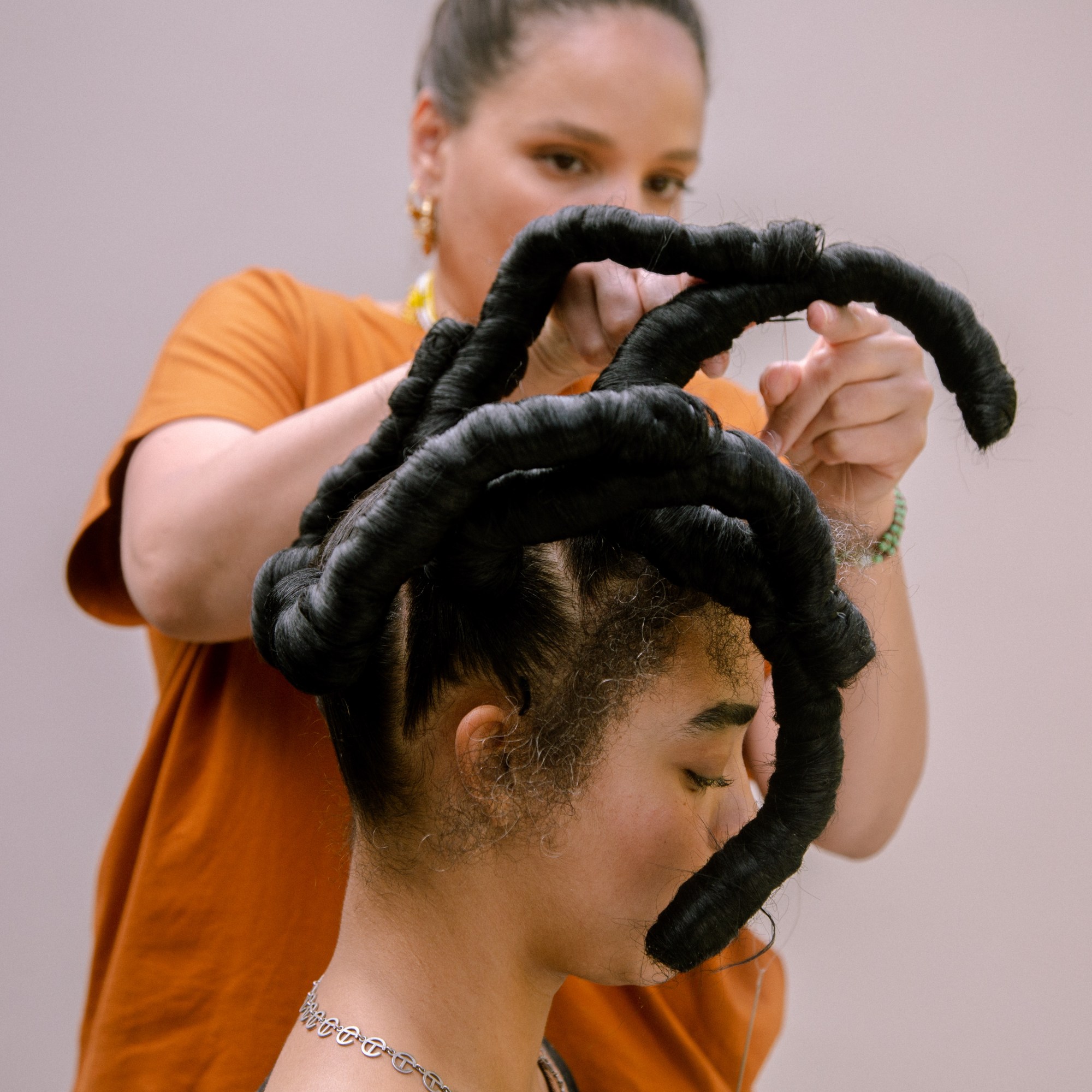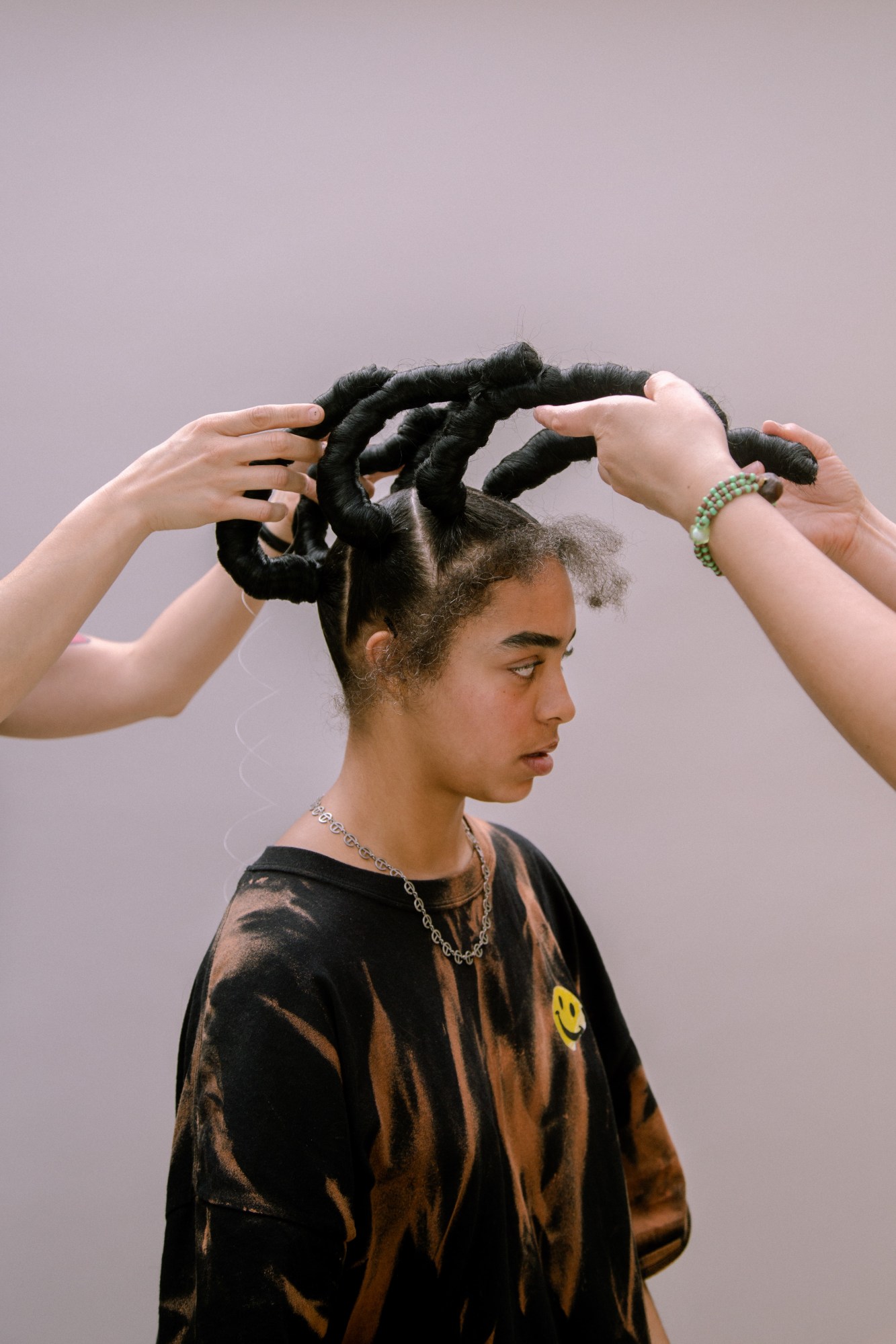Supported by Aveda
You’ve probably already seen Kelsey Lu’s video for “Shades of Blue”, which saw the artist and cellist wearing a incredible Molly Goddard gown in a verdant forest. Just as notable as the clothes and backdrop however, was her hair, whether natural and blowing in the wind, or teased into an elaborate crown of braids. The stylist responsible for these creations is Nena Soul Fly, an LA-based artist who works with hair and jewelry to tell a story about tradition, repression, and now freedom.
Soul Fly recently created hair for Lu for a concert she gave presented by Red Bull Music in LA. Lu, supported by a full orchestra, previewed her new album, while her statuesque braids, reminiscent of the roots of a tree, wrapped around her. i-D caught up with Soul Fly to talk about her work with Lu, her work with the Chicano artist Rafa Esparza, and the power of accepting femininity.

How did you come to work with Kelsey?
I met Lu a couple of years ago through a mutual friend, Lafawndah. And we just clicked, Lu has such an amazing energy, and she’s very much aligned with how I am. We had an unspoken understanding of each others vision. We have our sessions and there’s a lot of discussion of roots, and culture, and tradition — centered around hair and identity, and her childhood. She was teased a lot when she was younger, and she’d had experiences on set not finding someone who understands the sensitivity around her hair.
We’ve been looking at different African hairstyles, from different countries in Africa. Her being from the South, we really want to play with roots and origins. And then we think about the visual impact that will have. That’s pretty much it! She likes to shape shift and have fun creatively. Do what’s unexpected!
Kelsey’s work and the image she presents alongside it is always a surprise.
Yes! This project we recently did with Red Bull, we were just playing with the idea of length, and having a lot of drama. We wanted to capture the roots of trees — but I didn’t get to execute the project the way I’d intended, because I hadn’t thought about all the equipment on stage. So it’s about birth. Black women, specifically, birth ideas. The braids are like the roots of trees, grounding themselves in the earth. This idea of grounding, roots, and culture.

How did you become a hair artist?
I’ve braided since I was very young. My mother was a hair stylist, so I grew up surrounded by hair and makeup. I work in other mediums, but the hustle of needing to say what I want to say, and pulling in other hair stylists to create my vision and it not working out… it forced me to learn and figure it out. It’s a blessing, because fortunately people in my community saw what I was doing, and carried me to this point.
We see you’ve been working in Mexico City too.
There is this amazing LA-based artist named Rafa Esparza, he’s a performance artist, and Chicano, born and raised in East LA. I’m also from East LA, born and raised, from Highland Park. Through his medium he’s been able to bring me into that world, which hasn’t always been accessible to people of color, unless you have your MFA in fine art. It’s this untouchable space, but he’s been able to access that world, and bring in other artists in the community.
In Mexico City there’s a festival called Ceremonia, and this group of LGBTQ DJs, called NAAFI. They were invited to have their own space at Ceremonia, and they invited all these amazing DJs and artists from across Central and South America to perform. Rafa asked me to collaborate with him. We collaborated on a show before, Pacific Standard Time, which was a month long series of performances throughout LA highlighting artists. And now we’re working on a third project together in Santee Alley in LA. We’re shutting down the whole alley to have a fashion show.

You collaborated on a particularly impressive look for the event Traicion.
Yes! He was wearing a concrete mask that must have weighed 40 pounds. I was inspired by Chalchiuhtlicue, the deity of water and the stars. He was smashing the mash, so that whole project was about smashing the patriarchy.
How do you feel about being part of the current renaissance in women of color’s hair?
I feel honored. It’s a privilege for me to enter this world with black women and being able to create with their hair. I’m Puerto Rican, my Mom’s born on the island and my Dad’s Nuyorican, and I grew up in LA where there’s not a big Puerto Rican community at all. But hair was a part of my growing up.
We’re reclaiming natural beauty, and natural hair, and it’s super important with everything that’s happening in the US and outside of it too! Lawfawndah has introduced me to women in Europe reclaiming their hair and being able to wear it natural, or traditional, and Europe’s supposed to be the capital of fashion and forward thinking! But there’s still repression and resistance. So I feel humbled, and I want to stand in solidarity with my sisters. And working with the LGBTQ community, and working with Rafa! Rafa’s this big, Latino guy, he’s not petite, and he wasn’t allowed to embrace his femininity. Traicion was such an important moment for him because he was allowed to wear nails, and feel feminine. So to even be in solidarity with that culture is an honor too.

